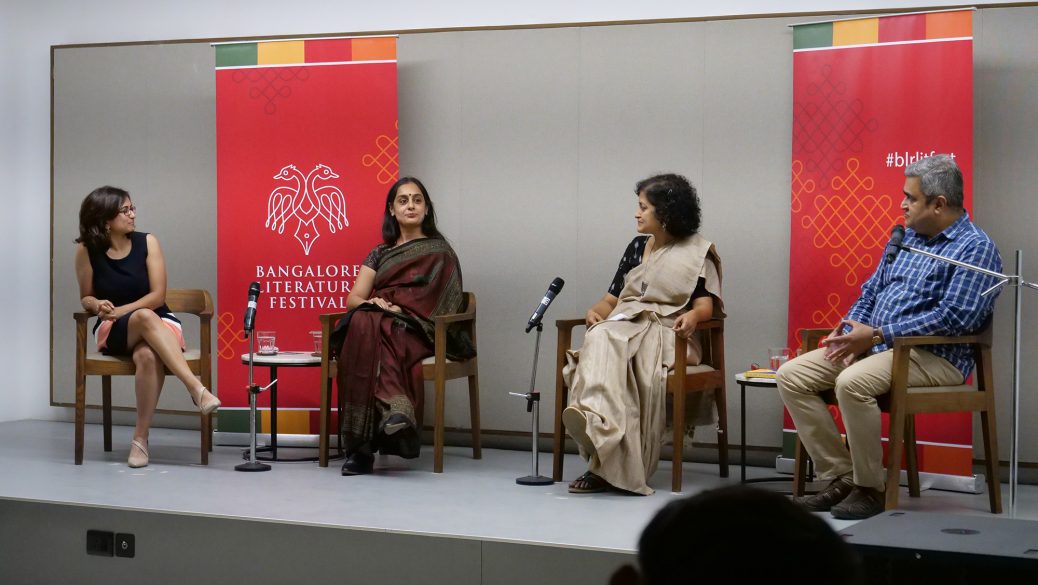Bangalore! To a local, the city is one that carefully caresses the history it comes with, and throws the demanding, fast paced world of start-ups, and tech parks, and a growing population to the mix. Eleven Stops to the Present: Stories of Bangalore is a book curated with short stories that revolve around this beautiful city.
The panel consists of Meera Iyer, a writer who deals with history, heritage, science, food, and environment among other things, Menaka Raman, a children’s book author, columnist and a communications professional, and Shweta Taneja, an award-winning speculative fiction author. Bringing them altogether is Karthik Venkatesh, the moderator today who is also a writer who dabbles in history, language, literature, and education.
The book is a collection of 11 stories, that touch upon the history of the city through different periods of time. All stories come with a fun side to them and is aimed to bring in awe around the history of the city, Meera says. Often consumed with dates and wars, history today is viewed only within the pages of a textbook, seldom looking at what happened in the streets of the city. Growing up, Meera says, she has grown with books from the west that very clearly talk about the streets of London and has come across only a few of them that illustrate her own city which is why this book came about.
Through the multiple little stories, all set at different times and places in Bangalore, such as those of Whitefield or Shivajinagar or Begur, the book aims to drive home a bit of pride from each of these episodes. Even though Menaka is in Bangalore for just about a few years, she was able to capture the essence of the area she lives in. While newer areas today boast of glitzy malls, and busy tech-parks, each of them has their own history with the same, even some less popular stories of Winston Churchill’s romance!
Similarly, Shweta has been in the city for only about a decade now and brings in the perspective of migrant population moving into Bangalore for hundreds of years today. This culmination of cultures and bringing spaces alive is where Shweta’s story lies. Another story on Begur combines the history of the inscription where the city’s name is first used, and has been brought into a story, Meera says.
The book boasts of a myriad of writers, all charged with the same brief, bringing a host of stories that pan through timelines and situations, and even protagonists. They aim to bring history of the ordinary lives of citizens just as known as the others.
“How do we keep up with understanding history”, Karthik asks. The ladies in the panel offer a great perspective. From talking to children about grandparents and great-grandparents, to exploring the city, tapping the natural curiosity of children, and even trying to redefine the timelines around what history could be, could just be the key to bringing in the tiniest of details from the past relevant today.
About the Author: A believer in the subtlety of magic in everyday living, and Shobhana seeks the same from the books she reads, and the poetry she writes. Immerses herself in music, literature, art, and looking out the window with some coffee. She curates her poetry, and occasional verses in her blog Thinking; inking. She currently writes for TheSeer.


